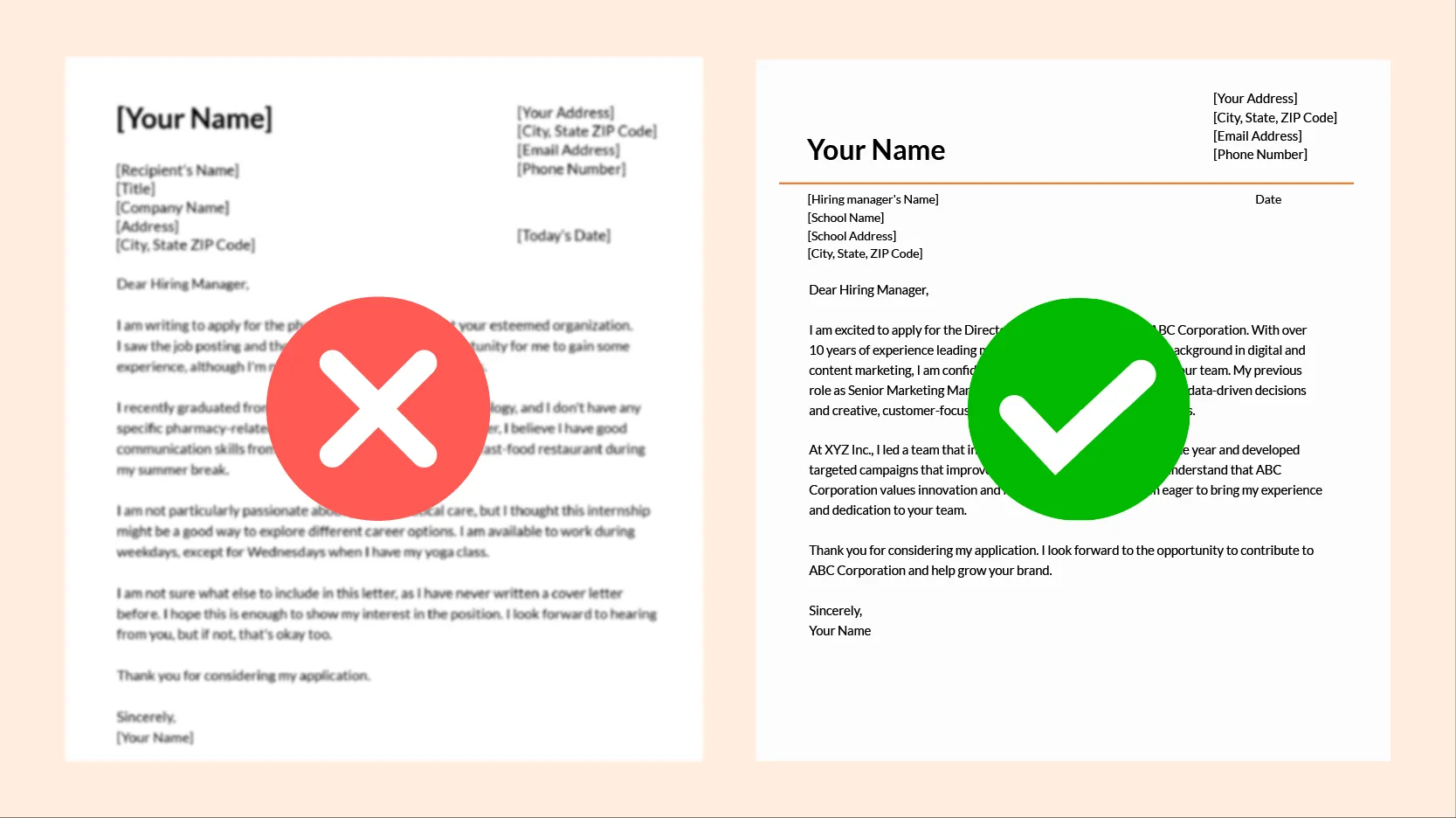Crafting a Marketing Director Cover Letter
A well-crafted cover letter is your first opportunity to make a strong impression on a potential employer. For a Marketing Director position, it’s crucial to go beyond simply listing your skills and experience. Your cover letter needs to demonstrate your understanding of the role, showcase your achievements, and highlight your passion for marketing. This guide will provide you with the necessary steps to create a compelling cover letter that captures the attention of hiring managers and sets you apart from other applicants. Remember, your cover letter is a marketing document in itself; it sells you as the best candidate for the job.
Understand the Role and Requirements
Before you start writing, thoroughly understand the responsibilities of a Marketing Director. Research the specific requirements of the job you’re applying for. What are the key skills and experiences the employer is seeking? What are the company’s current marketing challenges and goals? Understanding the role allows you to tailor your cover letter to directly address the employer’s needs and demonstrate your ability to provide solutions. This preliminary research is essential in showcasing that you are a well-prepared and thoughtful candidate.
Research the Company and the Position
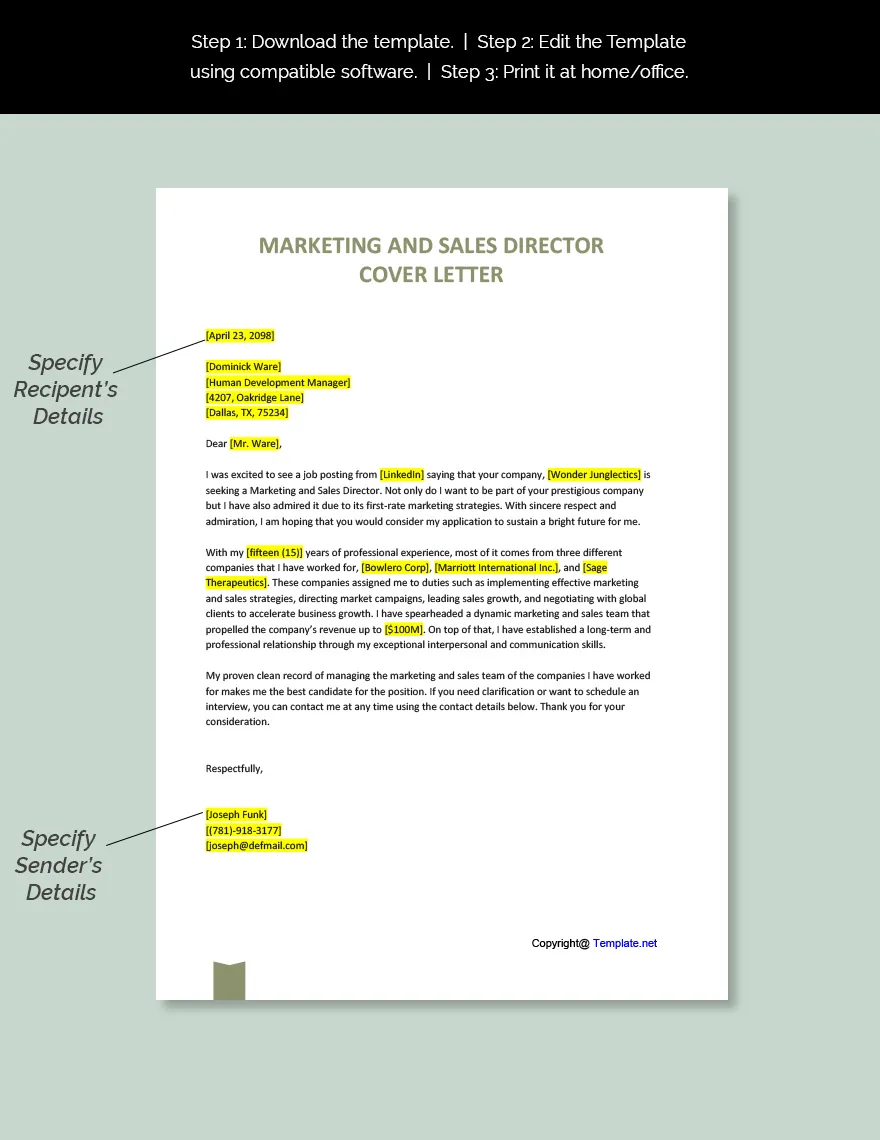
Dive deep into the company’s website, social media profiles, and recent press releases to learn as much as you can about its marketing strategies, target audience, and brand positioning. Identify the company’s mission, values, and culture. This information is crucial for personalizing your cover letter and demonstrating your genuine interest in the company. Understanding the specific needs of the position and the company’s overall objectives allows you to align your skills and experience with their requirements, making your application more impactful. Use the keywords from the job description to increase your chances of passing the applicant tracking system (ATS).
Highlight Relevant Skills and Experience
Focus on the skills and experience that align with the job description. Don’t just list your qualifications; provide examples of how you’ve successfully applied those skills in previous roles. Use the STAR method (Situation, Task, Action, Result) to describe your accomplishments. Quantify your achievements whenever possible, using data and metrics to demonstrate the impact of your work. This approach helps the hiring manager visualize your contributions and understand the value you would bring to their team. This highlights how your skillset aligns with the employer’s needs, which is the essence of an effective cover letter.
Key Skills to Showcase
Marketing Directors require a diverse skill set, including strategic planning, budget management, team leadership, digital marketing expertise, and data analysis proficiency. Mention your skills in market research, content creation, SEO/SEM, social media management, and campaign execution. Demonstrate your ability to develop and implement successful marketing strategies. Tailor your highlighted skills to match the requirements of the specific job posting. Be sure to include project management, communication, and leadership abilities. The ideal cover letter will paint a picture of a well-rounded marketing leader ready to tackle any challenge.
Quantifiable Achievements
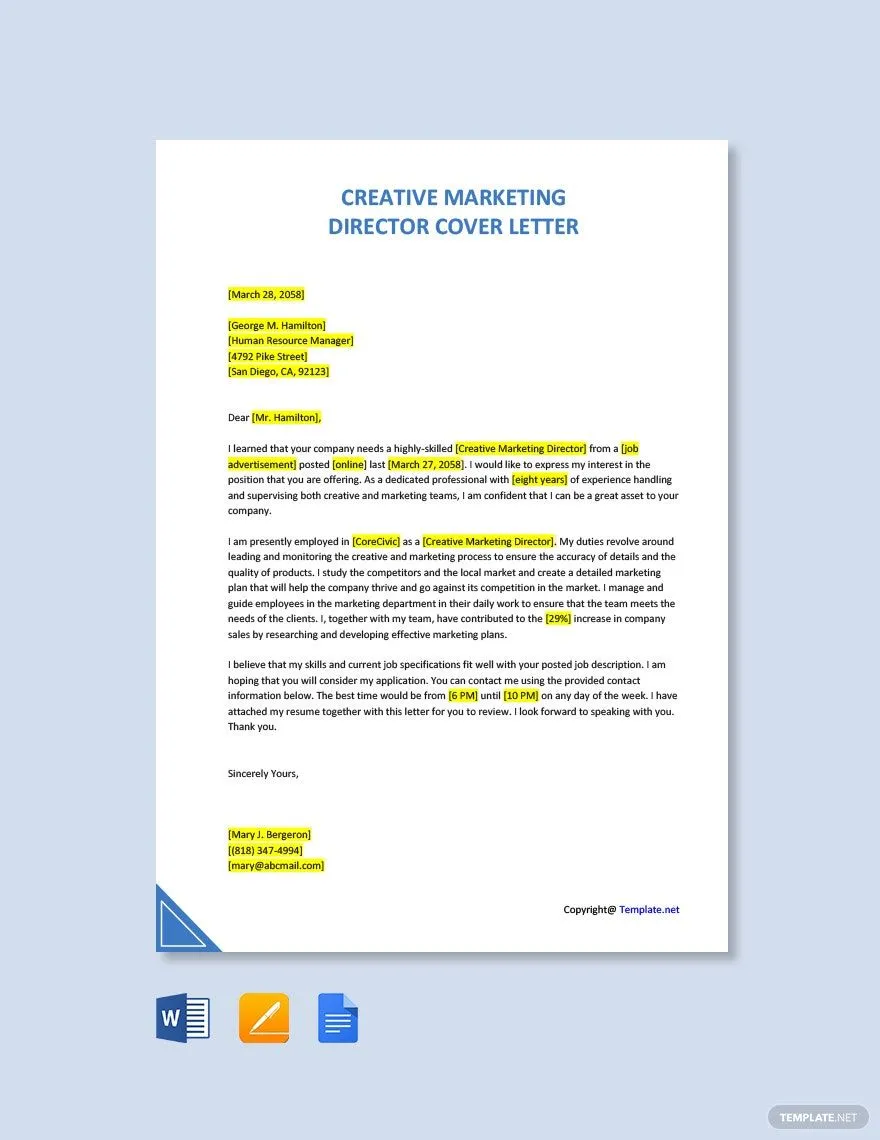
Use measurable results to prove your effectiveness. Instead of saying you increased sales, state the percentage increase. Instead of saying you improved brand awareness, quantify the growth in social media engagement or website traffic. Provide specific examples of successful marketing campaigns, budget management, and team leadership. Examples might include increasing lead generation by 30%, reducing marketing costs by 15%, or improving customer satisfaction scores by a certain percentage. Use numbers and percentages to clearly demonstrate your value to potential employers.
Structuring Your Cover Letter
A well-structured cover letter is easy to read and conveys your message effectively. A clear structure shows that you are organized and professional. The standard format includes a header with your contact information, a salutation, an introductory paragraph, body paragraphs highlighting your skills and experience, a closing paragraph, and a professional closing. Each section should serve a specific purpose. This logical flow helps the reader quickly grasp your qualifications and understand why you’re the best candidate for the role.
Header and Contact Information
Include your full name, address, phone number, and professional email address at the top of your cover letter. Also, include the date and the hiring manager’s name and title, if known. Using a professional format and ensuring all contact information is up-to-date is a vital first step. Your contact information allows the hiring manager to quickly and easily contact you for an interview. This attention to detail reflects your professionalism and commitment to the application process.
Greeting and Introduction
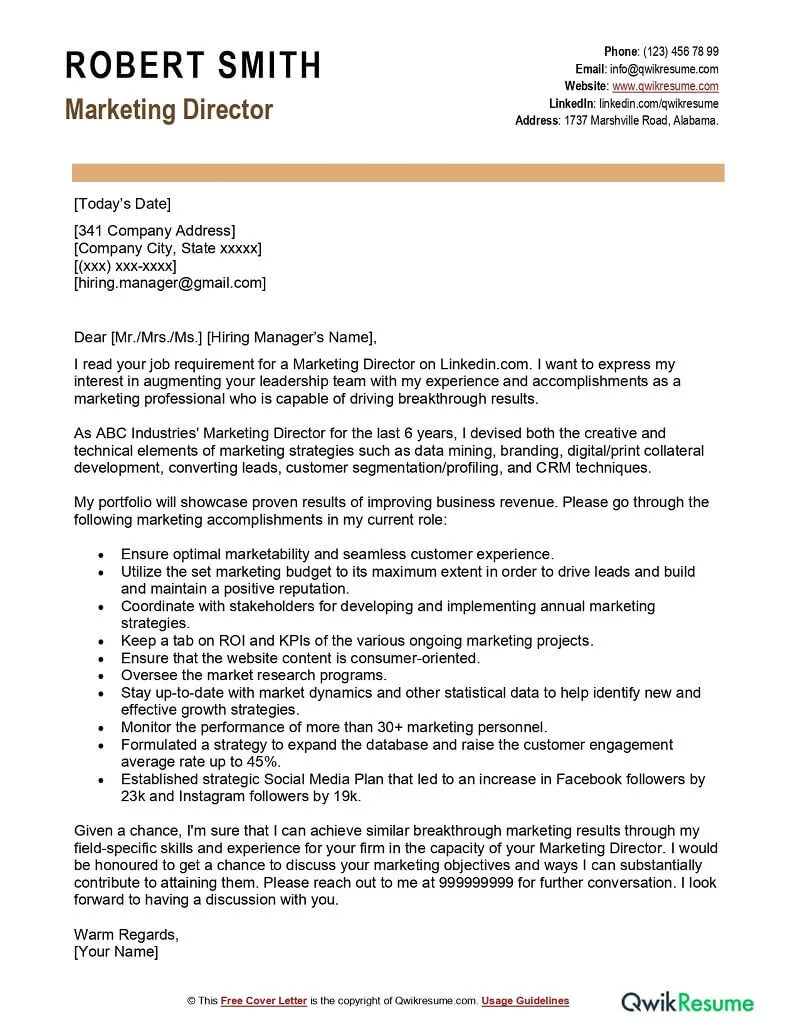
Address the hiring manager by name if possible; otherwise, use a professional salutation. Your introduction should immediately grab the reader’s attention. State the position you are applying for and briefly mention why you are a strong candidate. Highlight your most relevant skill or experience in the first paragraph. It’s a chance to make a strong first impression and create an immediate connection, demonstrating why you are the perfect fit for the role. A compelling introduction sets the tone for the rest of your letter.
Body Paragraphs
Use the body paragraphs to elaborate on your skills, experience, and achievements. Provide specific examples of your successes and explain how you have helped previous companies achieve their marketing goals. Tailor these paragraphs to the specific requirements of the job description. Demonstrate how your skills align with the company’s needs. The STAR method (Situation, Task, Action, Result) is highly effective here, allowing you to provide clear, concise examples of your past successes. Each paragraph should focus on a particular aspect of your qualifications and build a strong case for your candidacy.
Call to Action and Closing
Your closing should reiterate your interest in the position and express enthusiasm for the opportunity to discuss your qualifications further. Include a call to action, such as suggesting a meeting or interview. Thank the hiring manager for their time and consideration. End with a professional closing, such as “Sincerely” or “Best regards,” followed by your name. A strong closing leaves a lasting positive impression and increases the chances of moving forward in the hiring process. Be confident, and make it easy for the hiring manager to contact you.
Writing a Compelling Introduction
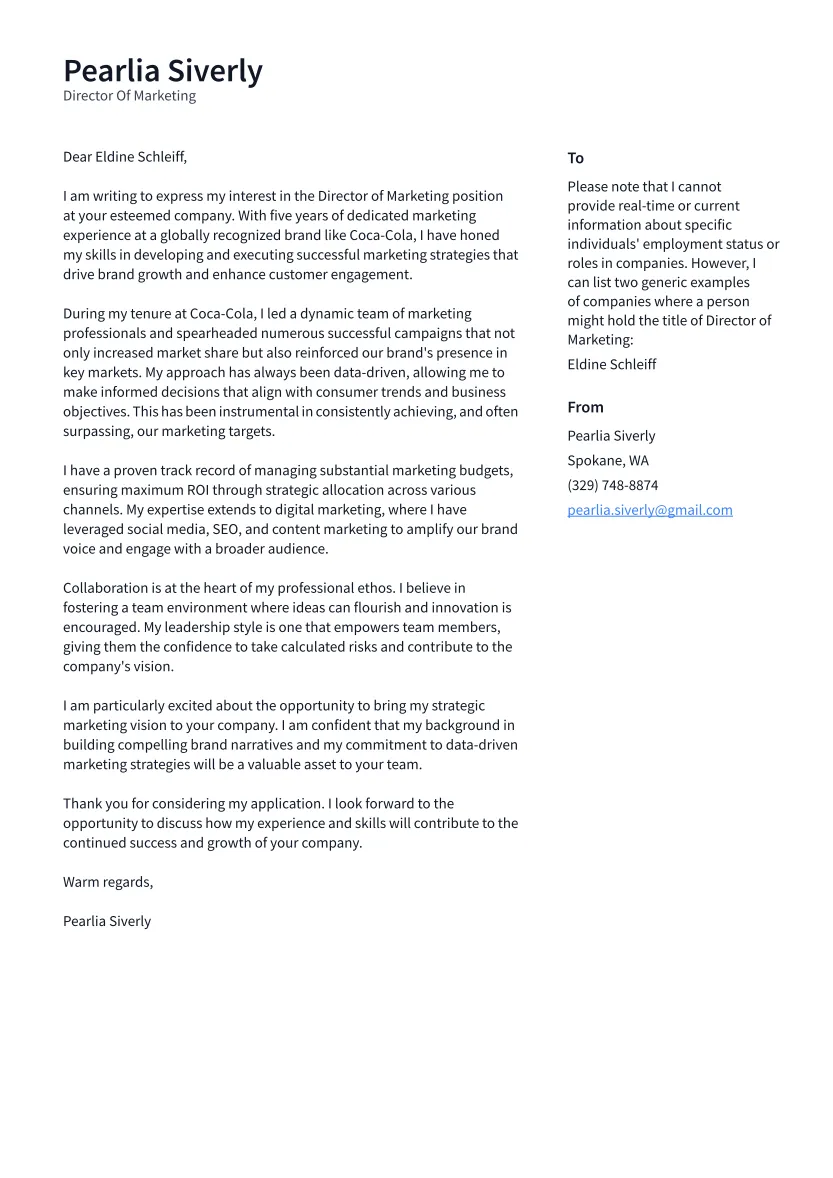
The introduction is your first and often only chance to capture the hiring manager’s attention. It must be concise, engaging, and tailored to the specific role. Consider starting with a brief statement of why you are excited about the opportunity and the company. Mention your most impressive achievement or a key skill that aligns with the job requirements. Aim for a hook that immediately piques the reader’s interest and sets the tone for the rest of your cover letter. Your opening paragraph should be captivating and show your enthusiasm for the role.
Showcase Your Passion
Express your enthusiasm for marketing and the specific company. Explain why you are drawn to the role and what excites you about their brand or mission. Demonstrating your passion sets you apart from other candidates who may simply be seeking a job. Authenticity and genuine interest are highly valued by employers. Mentioning the company’s recent marketing campaigns, awards, or innovations can show you’ve done your research and are genuinely interested. Your enthusiasm is infectious and will likely leave a positive impression on the hiring manager.
Mention Mutual Connections
If you have a mutual connection with someone at the company, mention it in your introduction. Referrals can significantly increase your chances of getting noticed. If you know someone who currently works for the company, or someone who has worked for them, and can use their name with permission, it can help. Referrals demonstrate that you are connected to the company in some way and show that you have an insider’s understanding of the company’s culture. This will give you a competitive edge over candidates who do not have the same connections.
Highlighting Achievements & Skills
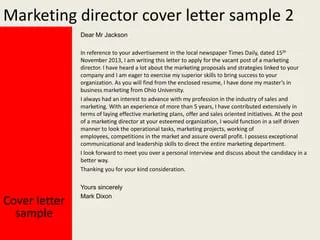
The body of your cover letter is where you provide specific examples of your achievements and skills. Go beyond simply listing your job responsibilities and showcase how you have used your skills to achieve positive outcomes. Use the STAR method to clearly describe a situation, the task you faced, the actions you took, and the results you achieved. This method helps you present your experience in a clear, concise, and compelling manner.
Tailoring to the Specific Job
Carefully review the job description and identify the key skills and experiences the employer is seeking. Then, tailor your cover letter to directly address those requirements. Use the same keywords and phrases from the job description to make your application more relevant. Customize each cover letter for each job application to showcase how your specific skills and experience align with the company’s needs and the specific duties of the position. Showing that you have carefully considered the employer’s needs will improve your chances of being selected.
Use Action Verbs
Use strong action verbs to describe your accomplishments and contributions. Instead of saying “Responsible for,” use words like “Managed,” “Led,” “Developed,” “Implemented,” “Launched,” “Increased,” or “Improved.” Action verbs make your cover letter more dynamic and demonstrate that you are a proactive and results-oriented individual. Action verbs add energy to your cover letter. Choosing the right verbs can significantly boost your credibility and highlight your achievements.
Quantify Accomplishments
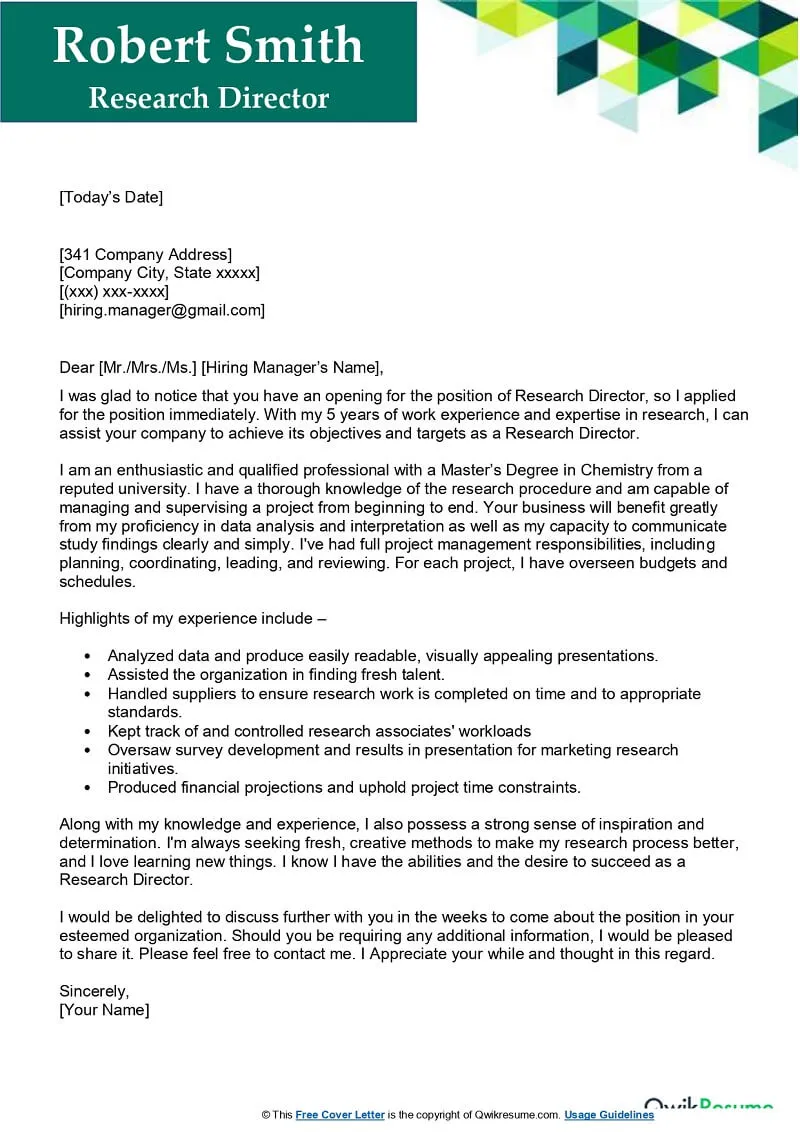
Whenever possible, quantify your achievements with data and metrics. Show, don’t just tell, the impact of your work. For example, instead of saying “Increased website traffic,” say “Increased website traffic by 40% in six months.” Metrics and numbers provide concrete evidence of your abilities and accomplishments. Quantifiable achievements make your accomplishments more persuasive and memorable. This clearly demonstrates the value you brought to previous positions.
Closing Your Cover Letter
The closing paragraph of your cover letter should reiterate your interest in the position and express your enthusiasm for the opportunity to discuss your qualifications further. Include a call to action, such as suggesting a meeting or interview. Thank the hiring manager for their time and consideration, and end with a professional closing. The way you close your cover letter leaves a lasting impression. The final words should encourage the hiring manager to contact you.
Express Enthusiasm
Reiterate your interest in the position and express your enthusiasm for the opportunity. Show that you are genuinely excited about the role and the company. Avoid generic statements and instead, reference something specific about the company or the position. This shows you have invested thought and effort into your application. Authenticity and passion are attractive qualities. This will demonstrate that you are not only qualified but also eager to join their team.
Include a Call to Action
Include a call to action to encourage the hiring manager to contact you. Suggest a meeting or interview to discuss your qualifications further. Make it easy for the hiring manager to take the next step. By clearly stating your desire for an interview, you prompt action. Providing the hiring manager with a clear path forward maximizes your chances of receiving a positive response. A simple statement like, “I am eager to discuss my qualifications further in an interview at your earliest convenience,” works well.
Proofread and Edit
Proofreading and editing your cover letter is critical. Errors can undermine your credibility and make you appear careless. Carefully review your cover letter for grammatical errors, spelling mistakes, and punctuation issues. Ask a friend or colleague to review your letter as well. A fresh pair of eyes can often catch errors you might have missed.
Check for Errors
Pay close attention to grammar, spelling, and punctuation. Ensure your sentences are clear and concise. Use spell check and grammar check tools, but also read your cover letter aloud to catch any awkward phrasing. A cover letter with errors suggests a lack of attention to detail, which is not a quality employers seek. Errors can prevent your application from even being read.
Formatting and Readability
Ensure your cover letter is well-formatted and easy to read. Use a professional font, such as Times New Roman, Arial, or Calibri, with a font size between 10 and 12 points. Use clear headings, bullet points, and white space to organize your content. Make sure your cover letter is easy to scan and read. A well-formatted cover letter shows that you are organized and detail-oriented. Good formatting makes it easier for the hiring manager to read and comprehend your letter.
